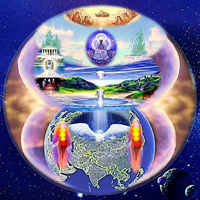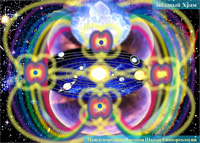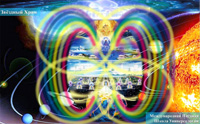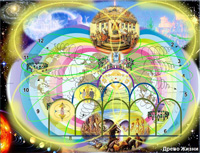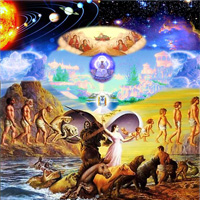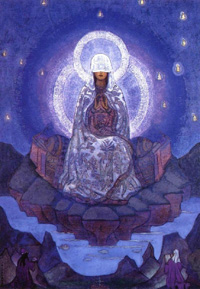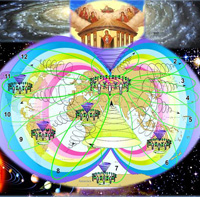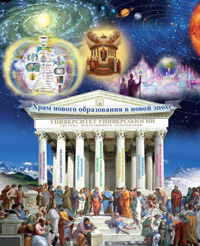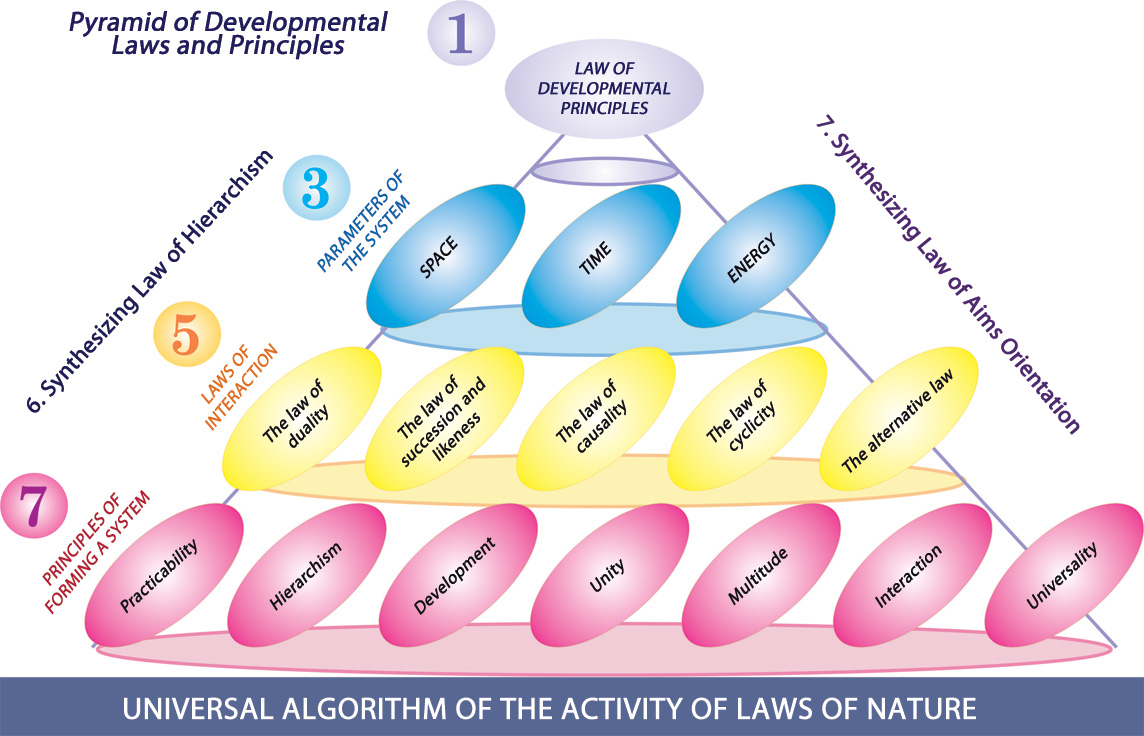Calendar
| Mo | Tu | We | Th | Fr | Sa | Su |
|---|---|---|---|---|---|---|
| 1 | 2 | 3 | 4 | |||
| 5 | 6 | 7 | 8 | 9 | 10 | 11 |
| 12 | 13 | 14 | 15 | 16 | 17 | 18 |
| 19 | 20 | 21 | 22 | 23 | 24 | 25 |
| 26 | 27 | 28 | 29 | 30 | 31 |
Moon Phase

Banners
| What is a law? Which laws are considered universal? |
|
A law is a recurring causal connection of phenomena to warrant development. A law expresses a certain order of causal, necessary, and stable connection between the phenomena or properties of objects and the recurring, significant relationships, in which a change of some phenomena causes a change in others. During the process of cognition, a human is discovering new laws of physics, chemistry, mathematics, the laws of society, and the laws of morality. In the variety of laws, it is essential to identify the ones that are universal. They are called universal because they act always, everywhere, and in everything, both in the micro and macrocosm, from the smallest subatomic particles to giant galaxies and the universe. Universal patterns recur consistently at all levels of relational systems, which makes it possible to predict the development of any living system in a most effective scientific way. Universal laws are objective, because they operate independently of people’s volition, regardless of whether people know them or not, agree with them or not, follow them or continue to persist in their ignorance.
It is possible to distinguish three main levels of the universal laws:
Level 1. In order to describe any process or any living system, it is necessary to determine the three main parameters: space, time, and energy. Their joint and interdependent manifestation ensures the development of the system and its transition to a qualitatively new state or a new stage of the developmental spiral. Therefore, three general schemes that determine these three parameters are based on the universal law of development: 1) the universal scheme of the structural organization of the system’s space, which determines the dynamics of its phased development, 2) the universal scheme of gradual formation of the system of relations in time, which determines the cycles and dynamics of its formation, 3) the universal scheme of joining the energy systems, which defines the conditions of growth of the energy potential of living systems in the super system that provides achieving the next stage of development.
Level 2. The five laws of interaction that determine the consistent patterns of the developmental processes of living systems are: 1) the law of dualism, duality, the law of polar interactions 2) the law of succession and likeness 3) the law of causality 4) the law of cyclicity 5) the alternative law, the law of freedom of choice.
Level 3. The five laws manifest through the seven beam laws, the seven energy streams, which determine the specific conditions of development. Before setting out to explore the universal laws of development, it is essential to denote the universal patterns that occur in the space of the structural organization of the system, in the time of development, and during the energy exchange. I. The basic patterns of the structural organization of the system in space are dual, threefold, fourfold, sevenfold, and decimal. Duality of any polar systems reflects as the cause and effect: the cause as the content and the effect being a form and consequence of its manifestation. The manifestation of duality of the whole and singular, general and individual, universal and unique is on the one hand, the infinite variety of unique and unrepeatable life systems. At the same time, it is the universality manifested in this variety and uniqueness. Duality also manifests in each of the polar ideas: the cause of the system is simultaneously a result of the super system, but the consequence of the system is simultaneously the cause of the subsystem.
Triplicity: 1) triplicity of causality is the cause, effect, in other words, a transitional process. Triplicity arises as a result of interaction, just as by interacting, the two polar sources give rise to a third at the point of transformation 2) in turn, each of the polar sources is also characterized by triple manifestation: three primary levels of human formation: the psycho-physical, emotional, and mental 3) The triplicity manifests in three circles of accumulating experience: formation, interaction, and management. The momentum of space development expands outward, whereas the accumulation of the organizational experience, integration, and management is focused inward 4) the triplicity of management based on the criteria of a larger system is the super system → system → subsystem A quaternary, 4th, transition level, or transformation channel, occurs during interaction between the triple sphere of consequences and the triple sphere of reasons. Therefore, fourfold means the manifestation of the subject’s scope of interaction in the area of consequences with the area of reasons as the motivation of its development yet to be discovered. The sevenfold structure arises as a result of interaction between the threefold sphere of consequences and the threefold sphere of reasons through the 4th, transitional level. This is how seven levels of the system occur: the triple subject, as a consequence → the transitional process → a triple object, as a cause; the sevenfold structure recurs at all levels of the systemic relations, which indicates the universality of life structure. The decimal structure occurs as a result of transition of the sevenfold system to the level of the super system. At this point, the data of seven basic levels are a threefold manifestation of the scope of consequences of the super system which similarly has a triple sphere of causes which results in ten levels (7 levels of the system + 3 system synthesizing levels of the super system). Thus, the universal patterns of the system’s structural organization manifest in the sevenfold structure of the system and in the triplciity of causal relationships at each level.
II. The universal patterns of the developmental dynamics in time or the universal patterns of cyclical processes present the cyclical involutionary-evolutionary development in time at seven levels of systemic relations in two phases: - seven stages in the involutionary phase constitute the development from one pole to the other during the stage of differentiation, adaptation, and analysis at seven levels - the next seven stages in the evolutionary phase constitute a reverse movement of the developmental impulse along the same seven levels from the second pole to the first, this time during the stage of combining, integrating, synthesizing into a new system Given the fact that two stages, the first and seventh, are transient, twelve stages of a complete cycle of the developmental system emerge. At all times, the developmental dynamics of all things has been considered: everything comes from a single source, unity discovers itself through duality or through the pairs of opposites; duality reveals in the triad; by way of the fourth, transitional level triads give rise to the sevenfold structure as the seven stages of life development in a cycle of twelve stages.
III. The basic patterns in the energy exchange manifest when all the systems strive to integrate and unite with a greater energy of connection. - the mass of matter decreases - the system becomes more compact, organized, and stable - the entropy of the system decreases as the manifestation of the degree of chaos - the new system is more energy-intensive - the energy is released in the form of radiative activity - radiation gives rise to new life forms which once again strive to integrate and unite with greater binding energy |
